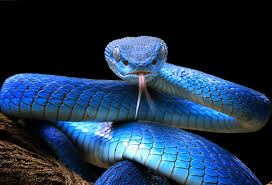July 16th is celebrated as World Snake Day, a day dedicated to raising awareness about snakes and their critical role in the ecosystem. Established in 2009 by the non-profit organization The Snake Conservation Trust, World Snake Day aims to educate the public about the ecological importance of snakes, promote their conservation, and dispel myths and misconceptions surrounding these often-misunderstood creatures. Snakes play a vital role in maintaining ecological balance, and this day serves as a reminder of the need to protect their habitats and ensure their survival.
The Ecological Role of Snakes
Predators and Prey
Snakes are essential components of many ecosystems. They occupy a variety of ecological niches and play crucial roles as both predators and prey.
- Rodent Control: Many snake species are effective controllers of rodent populations. By preying on rodents, snakes help manage the spread of diseases and damage caused by these pests. This natural pest control is beneficial for agriculture and human health.
- Food Source: Snakes themselves are preyed upon by a variety of animals, including birds of prey, mammals, and other reptiles. Their presence in the food chain supports the health and balance of ecosystems.
- Biodiversity: Snakes contribute to biodiversity by inhabiting diverse environments, from forests and grasslands to deserts and wetlands. Their presence indicates a healthy and balanced ecosystem.
Habitat and Ecosystem Health
The health of snake populations can be an indicator of overall ecosystem health. Changes in snake populations can reflect alterations in habitat quality and the impacts of environmental changes.
- Habitat Degradation: Habitat loss due to deforestation, urbanization, and agricultural expansion can threaten snake populations. Protecting and restoring natural habitats is essential for maintaining healthy ecosystems.
- Pollution: Pollution and chemical runoff can affect snake health and survival. Reducing pollution and implementing conservation measures can help protect both snakes and their habitats.
Conservation Challenges
Misconceptions and Fear
Snakes often face negative perceptions due to misconceptions and fear. Educating the public about snakes and their benefits is crucial for their conservation.
- Fear and Misunderstanding: Many people fear snakes due to misconceptions about their behavior and danger. In reality, most snake species are non-venomous and play beneficial roles in ecosystems.
- Human-Snake Conflicts: In areas where human populations and snake habitats overlap, conflicts can occur. Educating communities about snake behavior and implementing measures to reduce conflicts can help protect both people and snakes.
Conservation Efforts
Conservation organizations and initiatives work to protect snake species and their habitats. These efforts include:
- Habitat Protection: Protecting natural habitats from destruction and fragmentation is essential for snake conservation. This involves creating and maintaining protected areas and promoting sustainable land use practices.
- Education and Awareness: Public education campaigns help dispel myths about snakes and promote their conservation. Educational programs can be implemented in schools, communities, and through media outreach.
- Research and Monitoring: Ongoing research and monitoring of snake populations provide valuable data for conservation efforts. Understanding snake behavior, distribution, and threats is crucial for developing effective conservation strategies.
How to Observe World Snake Day
Educate Yourself and Others
- Learn About Snakes: Take the opportunity to learn more about snake species, their habitats, and their roles in ecosystems. Understanding the diversity and importance of snakes can help foster a greater appreciation for these creatures.
- Share Information: Use World Snake Day to share information about snakes with friends, family, and your community. Social media, community events, and educational programs can help raise awareness and dispel myths.
Support Conservation Efforts
- Donate to Conservation Organizations: Support organizations dedicated to snake conservation by making a donation. Your contribution can help fund habitat protection, research, and educational programs.
- Volunteer: Volunteer with local conservation groups or wildlife organizations that work on snake-related projects. Your time and efforts can make a significant impact on conservation initiatives.
- Participate in Citizen Science: Get involved in citizen science projects that monitor snake populations and contribute to conservation research. Many organizations offer opportunities for individuals to participate in data collection and monitoring efforts.
Promote Safe and Respectful Interactions
- Educate on Safe Practices: If you live in an area where snakes are common, educate yourself and others about safe and respectful interactions with these animals. Avoid disturbing snakes and learn how to coexist peacefully.
- Support Wildlife-Friendly Practices: Advocate for and support practices that protect wildlife and their habitats. This includes promoting sustainable land use, reducing pollution, and supporting conservation policies.
Snakes in Culture and Symbolism
Cultural Significance
Snakes have held various cultural and symbolic meanings throughout history. They are featured in mythology, religion, and art across different cultures.
- Mythology and Religion: In many cultures, snakes are symbols of transformation, healing, and fertility. They appear in religious texts and mythologies, representing both positive and negative attributes.
- Art and Literature: Snakes are frequently depicted in art and literature, symbolizing themes such as wisdom, danger, and renewal. These representations reflect the complex and multifaceted nature of snakes in human culture.
Conservation and Cultural Heritage
Understanding the cultural significance of snakes can enhance conservation efforts by recognizing the value of these creatures in various societies. Integrating cultural perspectives into conservation strategies can foster respect and support for snake preservation.
The Future of Snake Conservation
The future of snake conservation relies on continued efforts to protect their habitats, educate the public, and address the challenges they face. By fostering a greater understanding and appreciation of snakes, we can contribute to their survival and the health of ecosystems.
- Ongoing Research: Continued research on snake biology, behavior, and ecology will provide valuable insights for conservation efforts and help address emerging threats.
- Global Collaboration: Collaboration between conservation organizations, governments, and local communities is essential for effective snake conservation. Sharing knowledge and resources can enhance conservation efforts and support global initiatives.
- Public Engagement: Engaging the public in conservation efforts and promoting positive attitudes toward snakes will contribute to their protection and ensure that future generations can appreciate and benefit from these fascinating creatures.
World Snake Day on July 16th is a day to celebrate the ecological importance of snakes and promote their conservation. By raising awareness, supporting conservation efforts, and educating ourselves and others, we can contribute to the protection of snakes and their habitats. Let us use this day to recognize the vital roles that snakes play in our ecosystems and commit to ensuring their survival for future generations.








